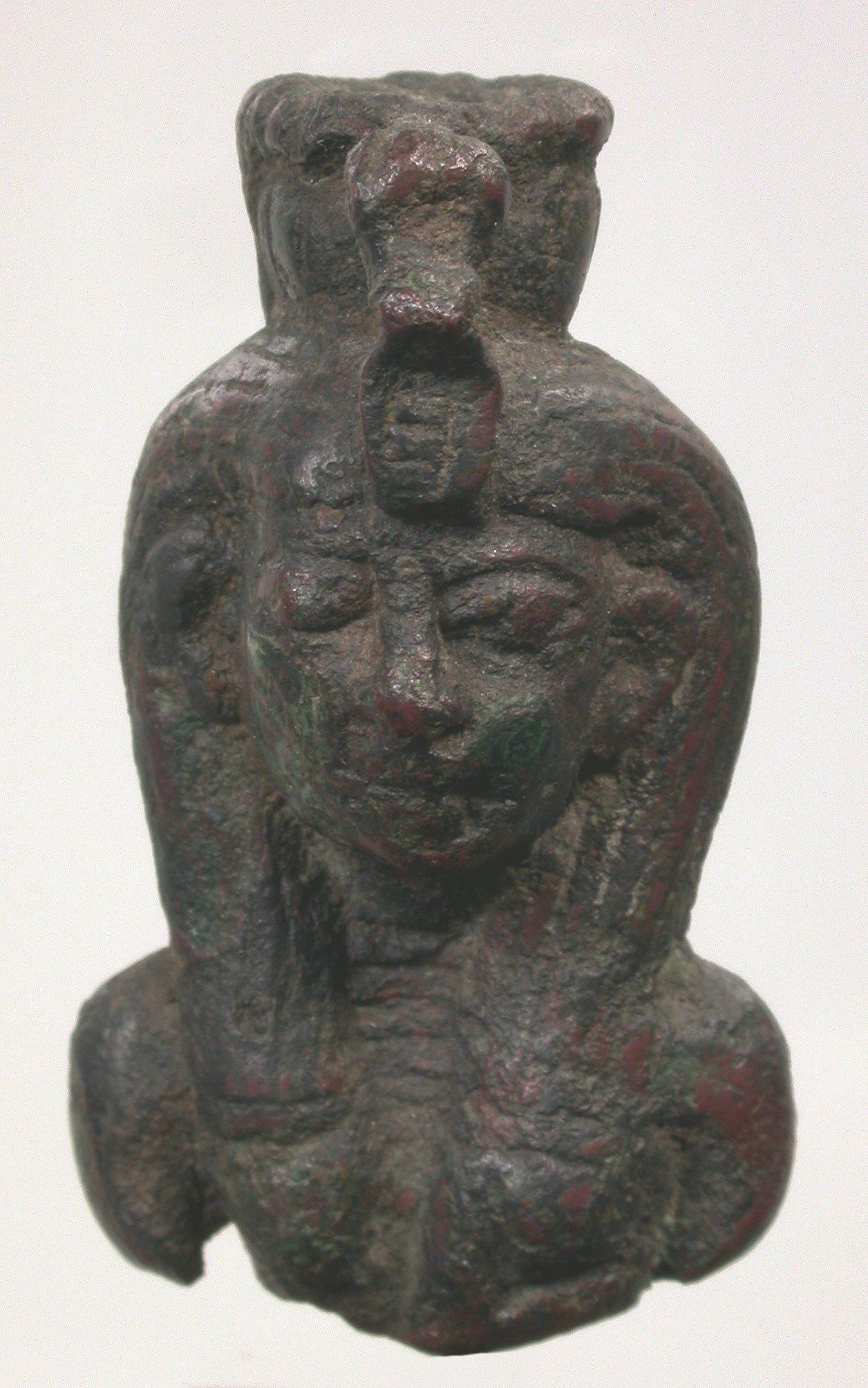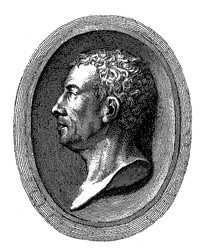Ägyptisch, 2. Hälfte 1. Jahrtausends v. Chr.
Die kleine Büste zeigt Gesicht und Brust einer Göttin. Das Gesicht ist von einer dreiteiligen Perücke umrahmt. Zwischen den beiden Haarteilen ist ein Halskragen sichtbar. Das Gesicht selbst ist rund und breit. Die Gesichtsdetails sind ohne große Sorgfalt eingeritzt, so daß die Augen unterschiedlich groß gestaltet sind. Auch die Ohren sind in unterschiedlicher Höhe angesetzt. An der Stirn richtet sich eine Uräusschlange auf, die einen Kopfschmuck trägt. Auf dem Kopf sitzt ein Kranz aus mehreren Uräen, in dem einmal der Kopfputz steckte, der heute verloren ist.
en

